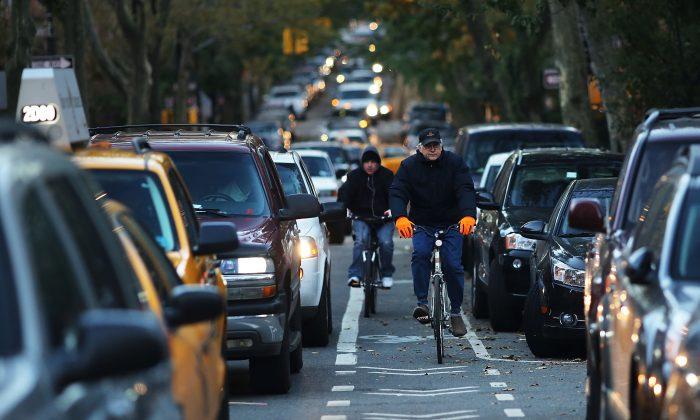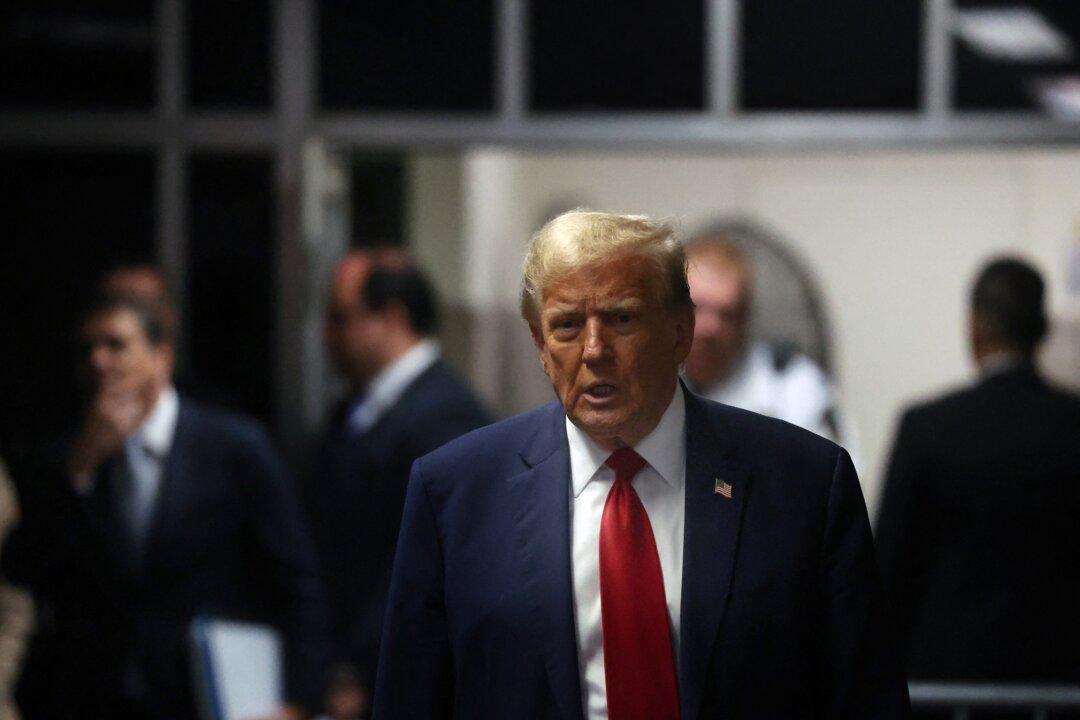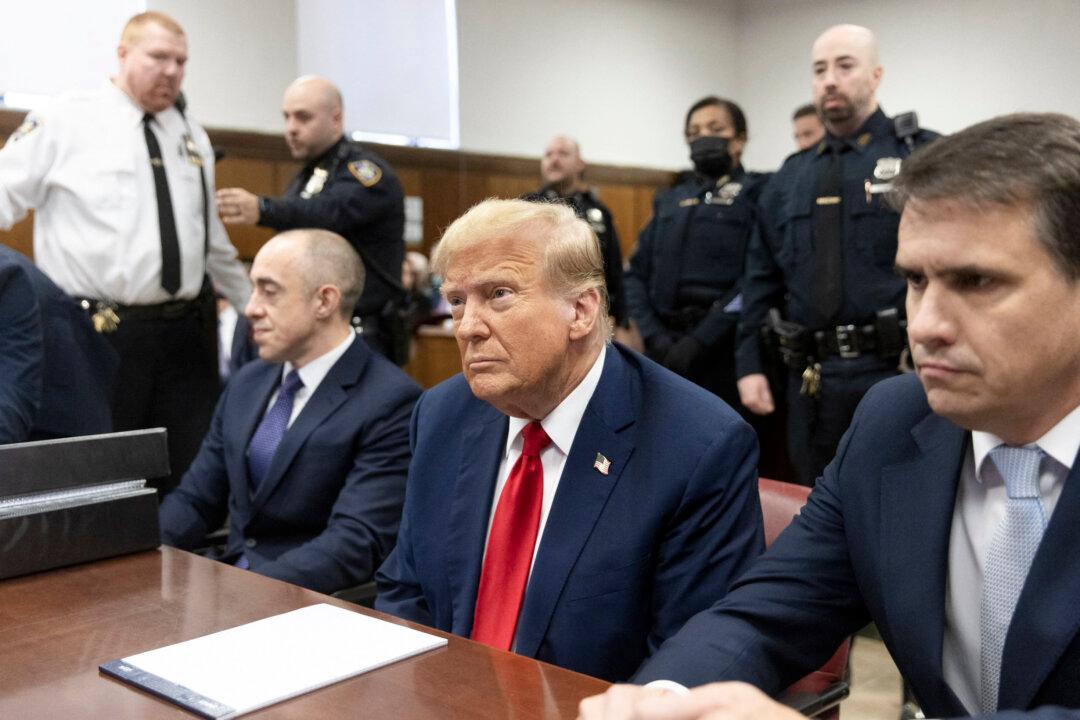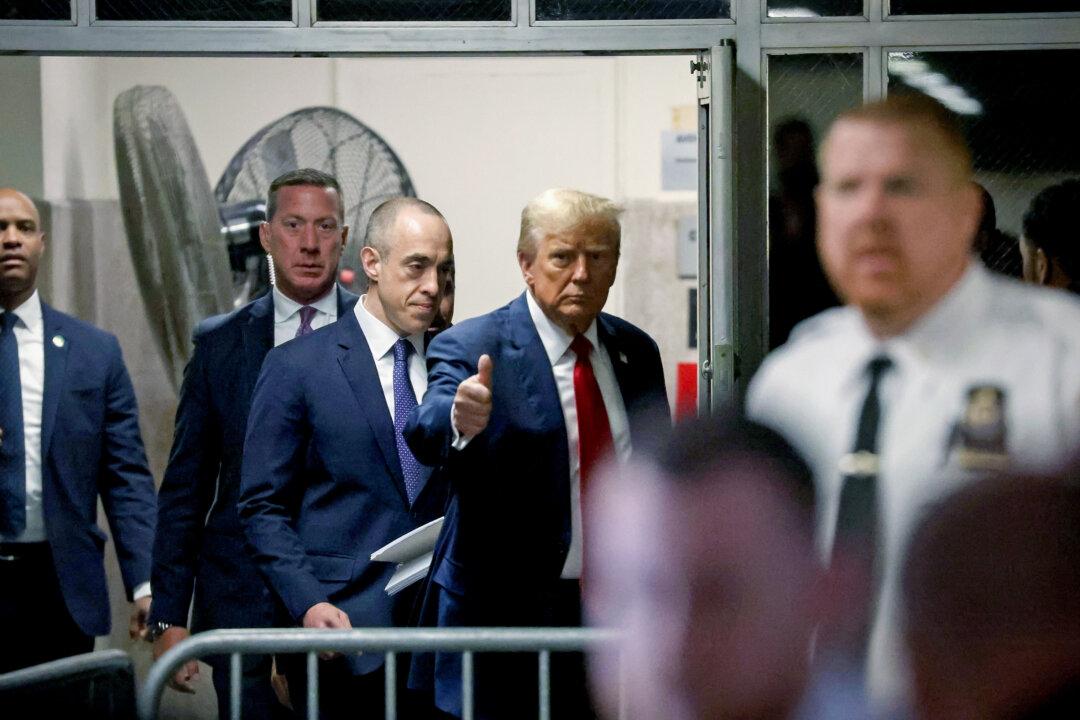NEW YORK—Sam Schwartz, the man who coined the term gridlock, has been trying to get rid of it for 43 years. “Since I was a young traffic engineer,” Schwartz, a former traffic commissioner, said.
As traffic commissioner, then as first deputy commissioner, and later as chief engineer, he has tried to correct what he refers to as the city’s cockamamie traffic incentives. Now in private practice, Schwartz is still at it.
Hundreds of thousands of vehicles cross Manhattan’s toll-free bridges every day, taking the long way to avoid a toll. Meanwhile, direct routes designed for heavy traffic cost up to $80. Many administrations have tried to enact tolls and fees to reduce congestion, but the plans have never gained the right momentum. So Schwartz threw them away. He doesn’t even use the term “congestion pricing,” although that is what it is commonly known as.
The win-win promise of Schwartz’s plan has brought previously staunch opponents to congestion pricing on board. Tolls and fees on area bridges, he said, can reduce congestion and provide the funding needed for maintenance and service.
On his own time and out of his own pocket, Schwartz met with hundreds of groups—any group that has ever had a problem with previous congestion pricing plans—to draw up a proposal that addresses them all.
“I care about the city—I care about New York very much,” Schwartz said.
New York City’s robust transportation network is the city’s lifeline, shuffling 10 million to 12 million people around the region day in and day out with commutes that only seem to get longer. Many policies are arcane and no longer suit the needs of the city’s economy.
Regional Responsibility
No one is going to step in and fund the city’s transportation needs, experts said, but it’s a hard pill to swallow for the frequent drivers and transit riders of the city.
Schwartz’s plan began as a way to solve the traffic problems of the “left out” regions that have continually resisted previous plans—neighborhoods in Eastern Queens, Staten Island, and other counties outside the city. But beyond the idealistic drive is a pragmatic approach to raise nearly a net $1.5 billion yearly to go toward funding transportation improvements.
The estimate, from a model developed by transportation economist Charles Komanoff, has been vetted by government agencies, independent groups like the Citizen Budget Commission (CBC), and private analysis firm HNTB.
Roads nationwide have long relied on the gas tax for high maintenance and repairs. But over the past few years, revenue from the tax is $20 billion less than expenses. The tax has not been raised since 1993, and Congress has been resistant to the idea of an increase. The Congressional Budget Office estimates the fund will run out as early as August, which would put road projects on hold indefinitely.
In the past, other taxes have been proposed to fund transit, but as soon as they were implemented, representatives would get their constituents exempted, said CBC President Carol Kellermann.
Transit ridership has reached record levels and fare hikes already surpass inflation, but those hikes are not enough, Kellermann said. The Metropolitan Transportation Authority is set to release a near-$30 billion five-year capital plan. Experts don’t see how that will be paid off. Service cuts from the authority’s 2010 financial crisis have yet to be restored.
In 2012, Schwartz teamed up with grass-roots campaign Move NY to develop the recently unveiled draft plan based on the idea of fair tolling.
Fair Fees
Rather than simply adding tolls to the free bridges, the plan would also lower them on the outer borough bridges sometimes up to 50 percent. That levels tolls out to about $5.33 or lower on city bridges. Commercial traffic would only be tolled once a day, and taxis in the Central Business District (CBD) of south Manhattan would have a surcharge added instead. This results in increasing the snail-paced speeds in the CBD up to 20 percent.
Drivers coming into the CBD from outside Manhattan previously accounted for the lion’s share of total revenue, which went toward paying for public transportation they do not or cannot use.
Revenue from Metropolitan Transportation Authority bridges already goes toward funding other public transportation needs, while DOT-managed bridges stay free, so MTA bridge tolls continue to inch up.
“These kinds of things develop for quirky historical reasons and take on a life of their own,” Komanoff said.
Over half a million trips are made over the four bridges over the East River each day, carrying cars and trucks with no business in the CBD through the congested area anyway. They pay nothing while even transit riders are paying $2.50–$30, Komanoff said.
Schwartz’s plan estimates Manhattan residents will pay the highest share under the proposed plan—almost a quarter—which Manhattan Chamber of Commerce President Nancy Ploeger said is not a concern for businesses. An estimated 117,000 more people will travel into the CBD each day as better and faster transportation options open.
The plan as a whole is thinking outside the box, Ploeger said. Groups that have weighed in so far seem to say the overall benefits far outweigh the costs.
Changing Consensus
Former Mayor Michael Bloomberg was the latest to suggest a congestion pricing plan for the city, but his plan was a top-down approach that entailed $8 tolls for the now-free bridges. Unsurprisingly, the drivers who rely on the bridges opposed the plan.
It passed at the city level, with votes against it from Brooklyn, Queens, and Staten Island, and fell through at the state level.
“The biggest hurdle is getting a consensus,” said Rich Barone, director of transportation programs for the Regional Plan Association. The association, which is working with Move NY and Schwartz to create the plan, is aware there needs to be tremendous political will to pull off such an undertaking. The more constituents ask for the plan, the more likely politicians will push for it, Barone said.
By starting with the areas that were left out of the last plan, Schwartz and Move NY’s plan has gained support from representatives in all five boroughs, Long Island, the Building Congress, the American Automobile Association’s New York chapter, and the trucking industry. Mayor Bill de Blasio, who did not support Bloomberg’s 2007 plan, has indicated interest in Schwartz’s proposal.
Groups that once opposed congestion pricing are now turning to the idea of a toll swap to address their respective needs. For instance, commercial drivers have recognized that the gas tax will not get bridges and highways fixed, said Kendra Hems, president of the New York State Motor Truck Association.
“This would lower tolls, create less traffic, and add more transit to my community—all good things,” said Mark Weprin, a council member representing southeastern Queens. Weprin, like the New York State Motor Truck Association, is only supporting the plan if the lowered tolls stay lowered and the transit and roadway fixes come.
Alex Matthiessen of Move NY said the idea is to create bonds with the projected $1.45 billion in expected net revenue, so the money cannot be used for other purposes.
The top priorities are addressing transit deserts and fixing roads. Many other ideas are in the pipeline, but for now the plan is simple and focused, Matthiessen said.
Move NY has started a 10-month listening tour to hear from as many stakeholders as possible, so when a final draft is ready at the end of the year a near-consensus will have been reached and policymakers can easily work with the plan.
“The reason there were so many opponents in the past is [because] last time it was shoved down people’s throats,” said Matthiessen. “With this process [stakeholders] can feel ownership in the plan.”





